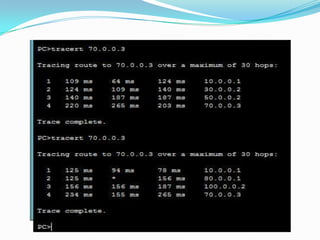This document provides a summary of a presentation on CCNA (Cisco Certified Network Associate). It was trained by Ravinder Kumar from Gurukul Technical Institute and submitted by Tarun Khaneja with roll number 2110045 and contact number 09034406598. The presentation introduces CCNA and discusses networking types and applications. It also covers networking devices, subnetting, routing protocols like RIP, EIGRP, OSPF, ACLs, VLANs, and inter-VLAN routing. Configuration examples are provided for EIGRP and RIP routing on the same network.
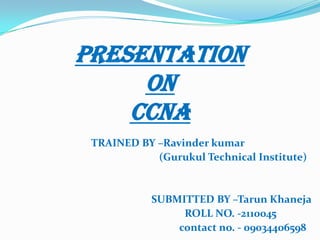

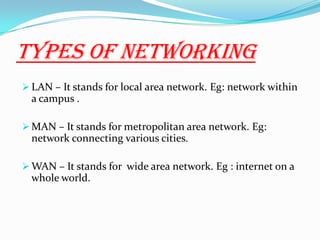

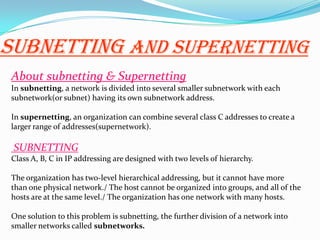

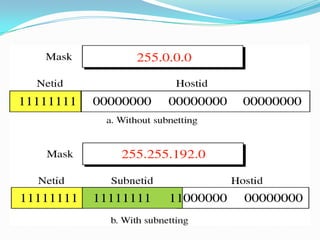




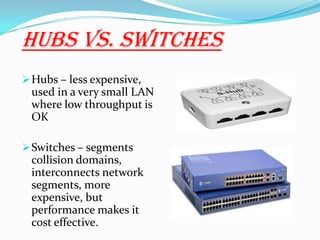


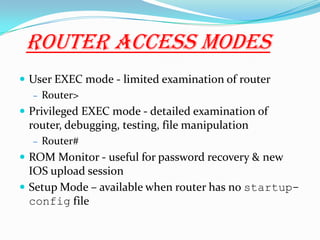
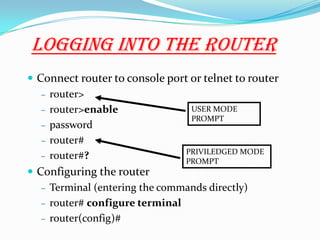
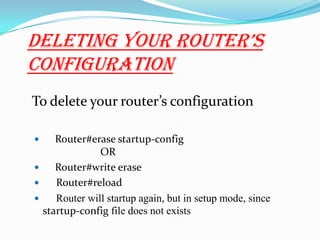
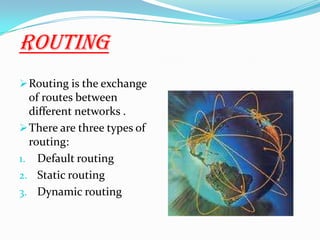
![ A routing protocol is the communication used between
routers.
A routing protocol allows one router to share information
with other routers.
The information a router gets from another router, using a
routing protocol, is used to build & maintain a routing
table.
Examples of routing protocols:
1. RIP [ROUTING INFORMATION PROTOCOL]
2. EIGRP[ENHANCED INTERIOR GATEWAY ROUTING
PROTOCOL]
3. OSPF[OPEN SHORTEST PATH FIRST]
DYNAMIC ROUTING](https://image.slidesharecdn.com/introduction-140318015826-phpapp01/85/ccna-summer-training-ppt-Cisco-certified-network-analysis-ppt-by-Traun-khaneja-09034406598-19-320.jpg)

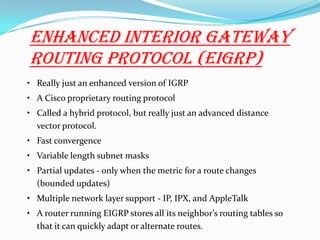








![Configuration of R0
First we will configure R0. To configure double click on R0 select CLI and configure it as given below
To configure and enable RIP as backup routing on R0 follow these commands exactly.
R0>enable
R0#sh ip interface brief
Interface IP-Address OK? Method Status Protocol
FastEthernet0/0 80.0.0.1 YES manual up up
FastEthernet1/0 90.0.0.1 YES manual up up
FastEthernet1/1 100.0.0.1 YES manual up up
R0#configure terminal
Enter configuration commands, one per line. End with CNTL/Z.
R0(config)#router rip
R0(config-router)#network 80.0.0.0
R0(config-router)#network 90.0.0.0
R0(config-router)#network 100.0.0.0
R0(config-router)#exit
R0(config)#exit
%SYS-5-CONFIG_I: Configured from console by console
R0#copy run start
Destination filename [startup-config]?
Building configuration...
[OK]
R0#
We need not to configure EIGRP on it as its only going to be a backup route](https://image.slidesharecdn.com/introduction-140318015826-phpapp01/85/ccna-summer-training-ppt-Cisco-certified-network-analysis-ppt-by-Traun-khaneja-09034406598-30-320.jpg)

![R1(config)#router rip
R1(config-router)#network 10.0.0.0
R1(config-router)#network 20.0.0.0
R1(config-router)#network 30.0.0.0
R1(config-router)#network 80.0.0.0
R1(config-router)#exit
R1(config)#router eigrp 1
R1(config-router)#network 10.0.0.0
R1(config-router)#network 20.0.0.0
R1(config-router)#network 30.0.0.0
R1(config-router)#exit
R1(config)#exit
%SYS-5-CONFIG_I: Configured from console by console
R1#copy run start
Destination filename [startup-config]?
Building configuration...
[OK]
R1#](https://image.slidesharecdn.com/introduction-140318015826-phpapp01/85/ccna-summer-training-ppt-Cisco-certified-network-analysis-ppt-by-Traun-khaneja-09034406598-32-320.jpg)




